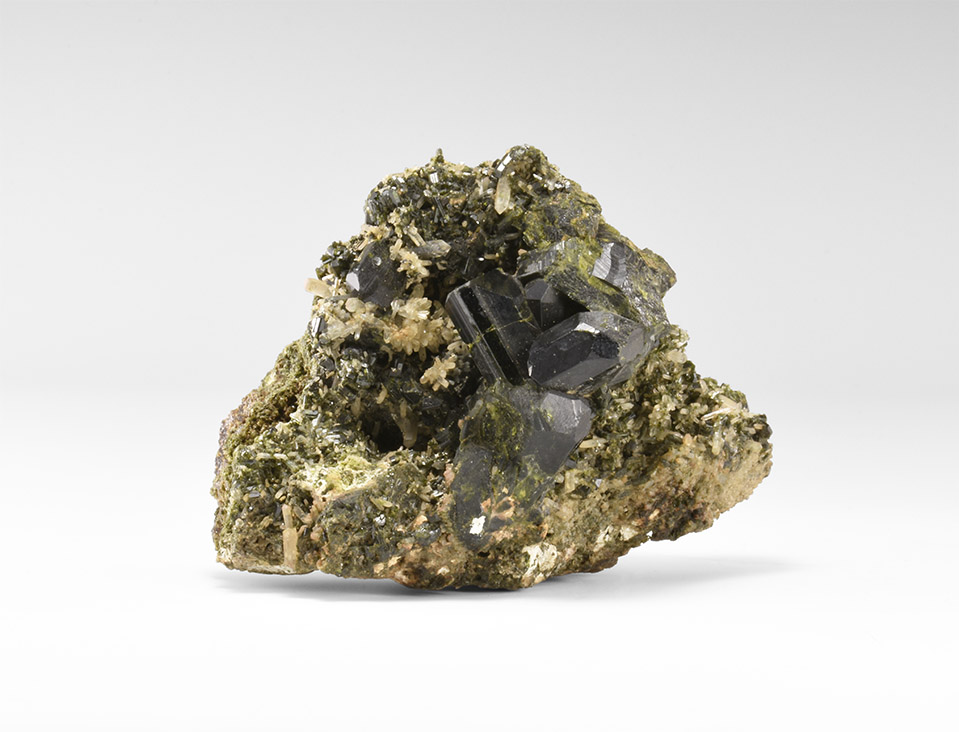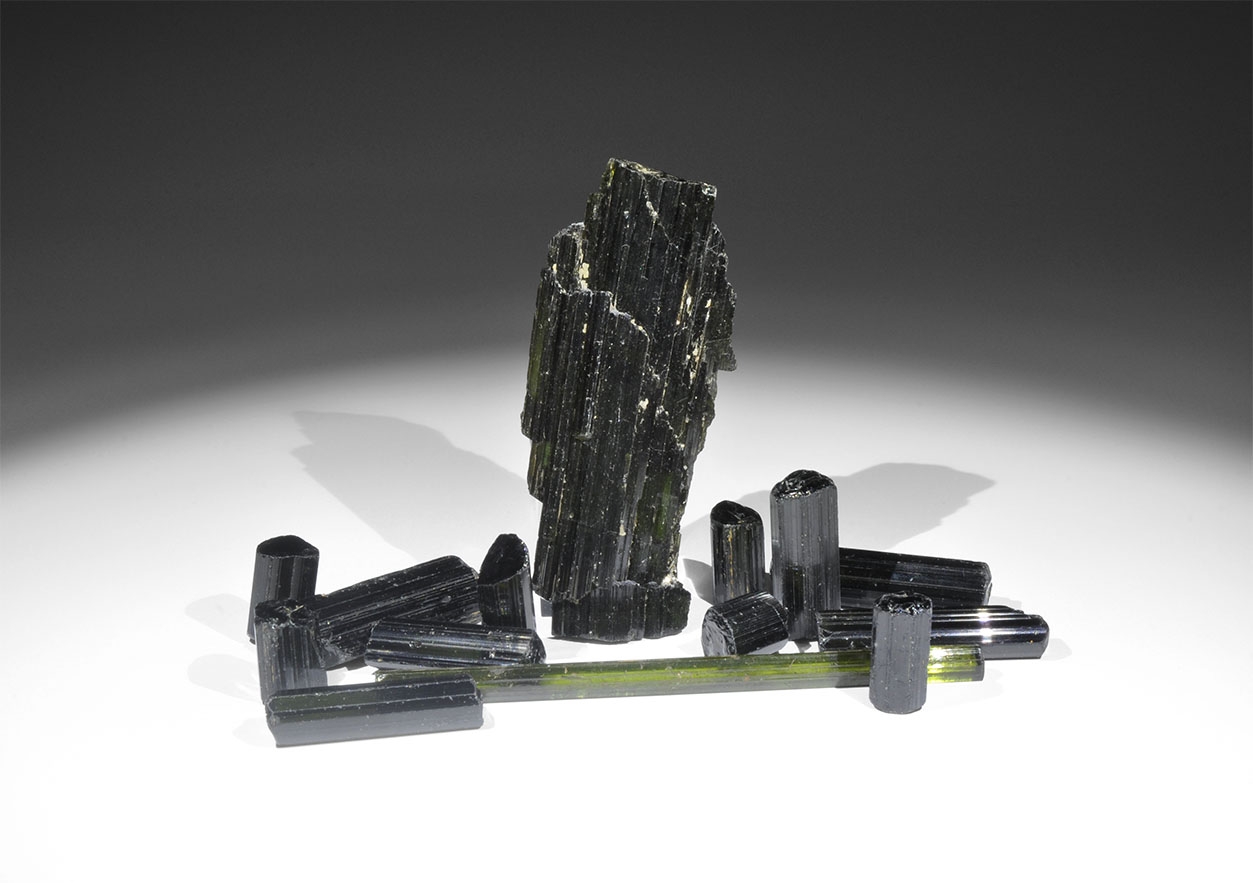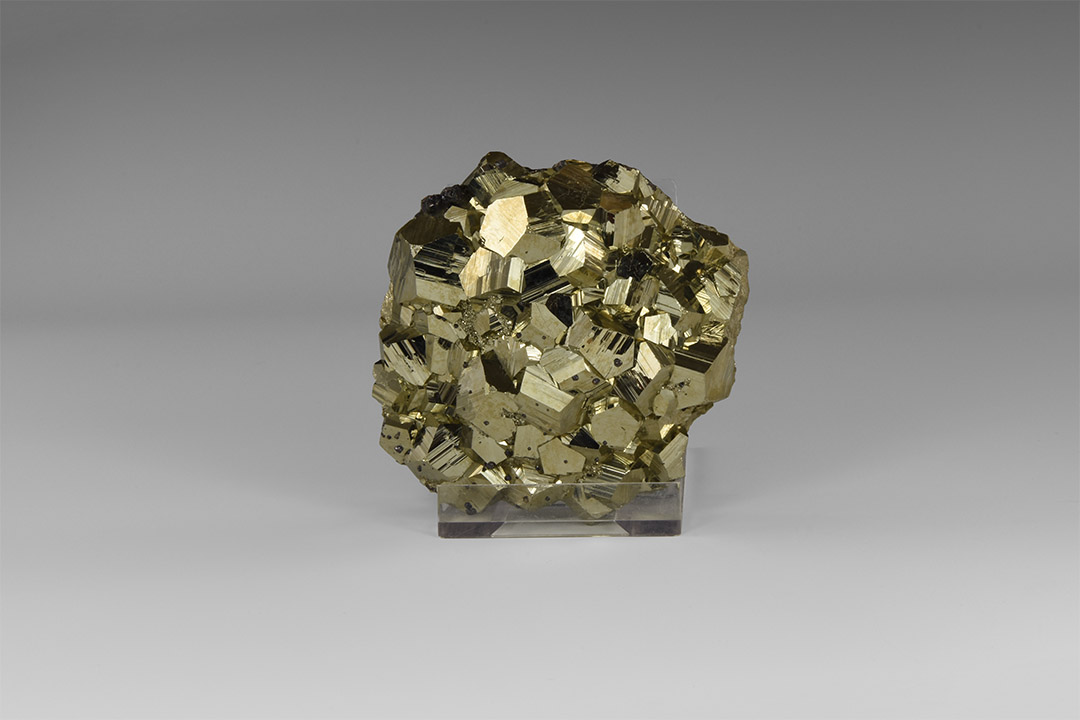GEOLOGICAL UNUSUALLY FINE GROUP OF DIOPTASE CRYSTALS FROM NAMIBIA A lustrous, emerald-green group of finely crystallised dioptase from the famous Tsumeb Mine. Originally in calcite (acid removed) and retaining small calcite on bottom of specimen. 49 grams, 49 mm total, largest crystal 16 mm (2", largest crystal 3/4"). Very fine condition. A few damaged points which do not detract. [No Reserve] Provenance Ex Douglas Rose collection; ex Christopher Cavey collection (with label); from the Tsumeb Mine, Otavi-Bergland District, Oshikoto, Namibia. Footnotes Tsumeb is notable for its huge mineralized pipe, the origin of which has been hotly debated. The pipe penetrates more or less vertically through the Precambrian Otavi dolomite for at least 1300 m. One possibility is that the pipe was actually a gigantic ancient cave system and that the rock filling it is sand that seeped in from above. If the pipe is volcanic, as some have suggested, then the rock filling it (the "pseudo-aplite") is peculiar in the extreme. The pipe was mined in prehistoric times but the ancient workers barely scratched the surface; most of the ore was removed in the 20th century by cut-and-fill methods.
GEOLOGICAL UNUSUALLY FINE GROUP OF DIOPTASE CRYSTALS FROM NAMIBIA A lustrous, emerald-green group of finely crystallised dioptase from the famous Tsumeb Mine. Originally in calcite (acid removed) and retaining small calcite on bottom of specimen. 49 grams, 49 mm total, largest crystal 16 mm (2", largest crystal 3/4"). Very fine condition. A few damaged points which do not detract. [No Reserve] Provenance Ex Douglas Rose collection; ex Christopher Cavey collection (with label); from the Tsumeb Mine, Otavi-Bergland District, Oshikoto, Namibia. Footnotes Tsumeb is notable for its huge mineralized pipe, the origin of which has been hotly debated. The pipe penetrates more or less vertically through the Precambrian Otavi dolomite for at least 1300 m. One possibility is that the pipe was actually a gigantic ancient cave system and that the rock filling it is sand that seeped in from above. If the pipe is volcanic, as some have suggested, then the rock filling it (the "pseudo-aplite") is peculiar in the extreme. The pipe was mined in prehistoric times but the ancient workers barely scratched the surface; most of the ore was removed in the 20th century by cut-and-fill methods.















Try LotSearch and its premium features for 7 days - without any costs!
Be notified automatically about new items in upcoming auctions.
Create an alert